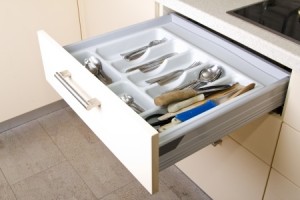 While it’s tempting to use the start of a new year to make lots of plans and resolutions, this approach is often doomed to disappointment. By February you are no longer going to the gym once a week, let alone three times, and those healthful meals you planned have given way to fast food at least once a week. So what can you do to celebrate 2015 that you can actually accomplish? Here are a few suggestions.
While it’s tempting to use the start of a new year to make lots of plans and resolutions, this approach is often doomed to disappointment. By February you are no longer going to the gym once a week, let alone three times, and those healthful meals you planned have given way to fast food at least once a week. So what can you do to celebrate 2015 that you can actually accomplish? Here are a few suggestions.
Take care of the little things. Do you find yourself frustrated because you can’t find anything in your kitchen junk drawer or you are tired of tripping over the boxes of giveaway items you haven’t taken the time to bring to your favorite charity? Those small unfinished projects can bother you several times a day but hardly seem worth the time to complete. However over time getting those projects off your to-do list frees up time and space and reduces stress. Plan to finish one lingering little project a week. You may find you have more time and energy for the more important things.
Change one thing for the better. Maybe it’s eating an apple a day, or walking up the stairs instead of taking the elevator one day a week. You might consider switching sodas for water or serving your family fruit for dessert several times a week. You may want to make major changes, but one simple change is easier to make a part of your life. You can always add other changes later.
Speak with kindness. Like someone’s hair or blouse? Tell them. Say thank you for unexpected consideration from others. Write Thank-you notes. It’s easy to get caught up in your day, ignoring the thoughtful gestures of other people. Pay attention. Did your daughter clean her room, or your son take out the garbage without being prompted? Recognize these small efforts with a compliment or some acknowledgement.
So let go of the big resolutions and plans for 2015. Instead, commit to gradual and easy changes that you can accomplish. And have a lovely new year.








